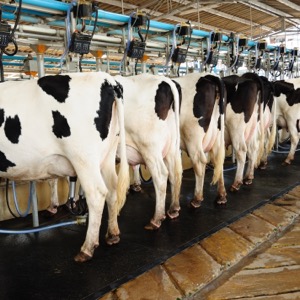By IDSE News Staff
A second human case of highly pathogenic avian influenza A(H5) virus infection was identified in Michigan. This is the third human case associated with an ongoing multistate outbreak of A(H5N1) in U.S. dairy cows.

None of the three cases are associated with the others, according to the CDC, which says the risk to the public is still low. As with the previous two cases (one in Texas, one in Michigan), the person is a dairy farm worker with exposure to infected cows, making this another instance of probable cow-to-person spread.
However, this is the first human case of H5 in the United States to report more typical symptoms of acute respiratory illness associated with influenza infection, including A(H5N1) viruses.
The CDC said it continues to closely monitor available data from influenza surveillance systems, particularly in affected states, and there has been no sign of unusual influenza activity in people, including no increase in ER visits for influenza and no increase in laboratory detection of human influenza cases.
Risk depends on exposure, the CDC said, and in this case, the relevant exposure is to infected animals. Although the risk to the public remains low, this development underscores the importance of people working around potentially infected animals to take precautions. People with close or prolonged, unprotected exposures to infected birds or other animals, or to environments contaminated by infected birds or other infected animals, are at greater risk for infection and should take precautions.
A dairy worker with exposure to H5N1-infected cows reported symptoms to local health officials. The patient reported upper respiratory tract symptoms including cough without fever and eye discomfort with watery discharge. The patient was given antiviral treatment with oseltamivir, is isolating at home, and the symptoms are resolving. Household contacts of the patient have not developed symptoms, are being monitored for illness and have been offered oseltamivir. No other workers at the same farm have reported symptoms, and all staff are being monitored. There is no indication of person-to-person spread of A(H5N1) viruses at this time.
This case was detected through Michigan’s active monitoring program for people exposed to infected livestock, in collaboration with the CDC.
“The identification of an additional case of H5 is not surprising and shows the importance of a proactive public health response,” the CDC said in a statement. “Given the extent of the spread of this virus in dairy cows, additional human cases in people with higher risk exposures would not be surprising.”
To date, there have been four human cases in the United States since 2022. As of June 4, nine states have reported cases in 81 dairy herds; 48 states have reported more than 96 million poultry with avian flu; and cases have been found among wild birds in every state.
{RELATED-HORIZONTAL}